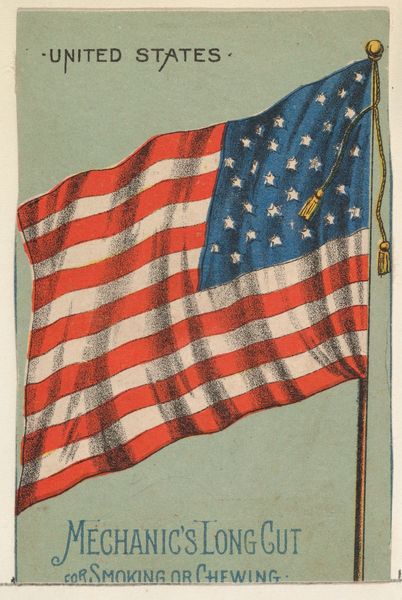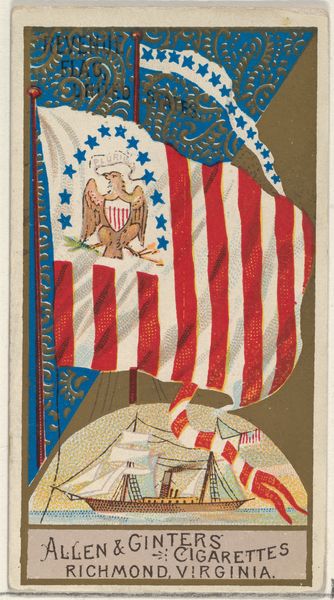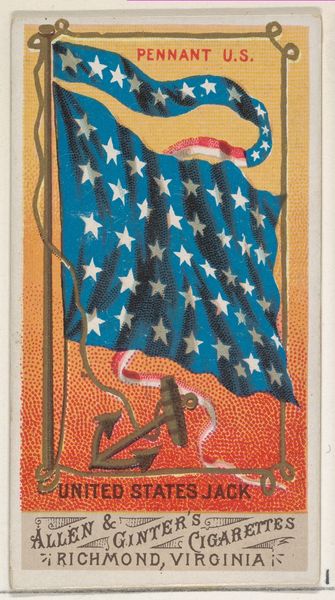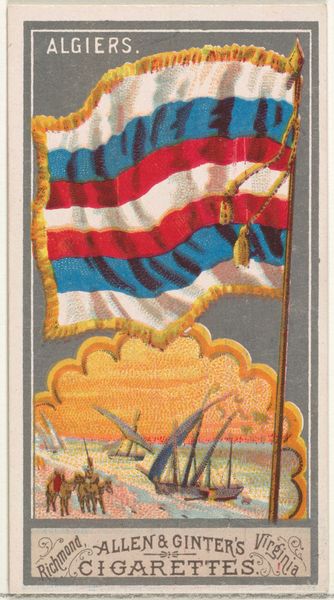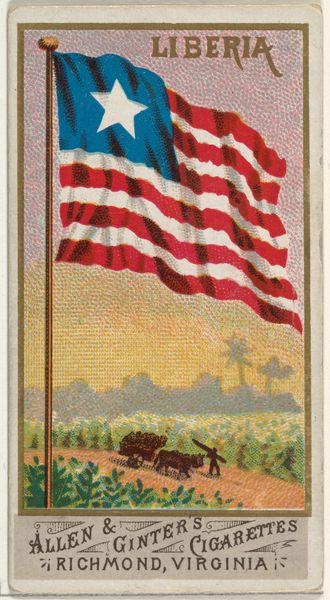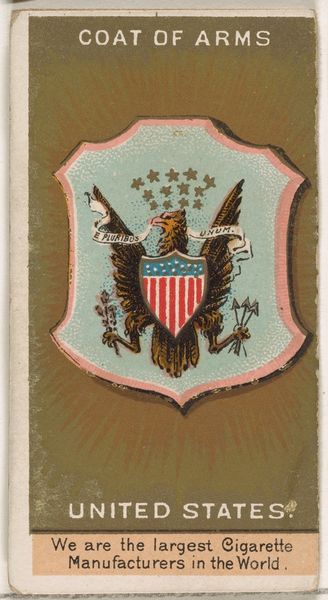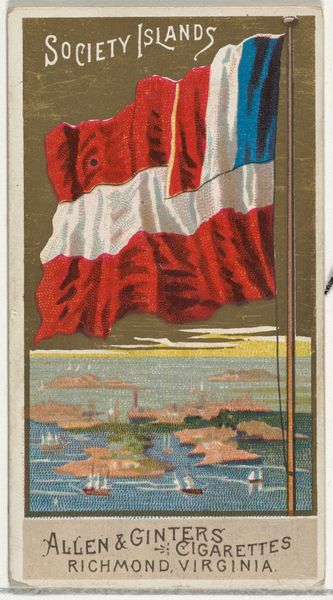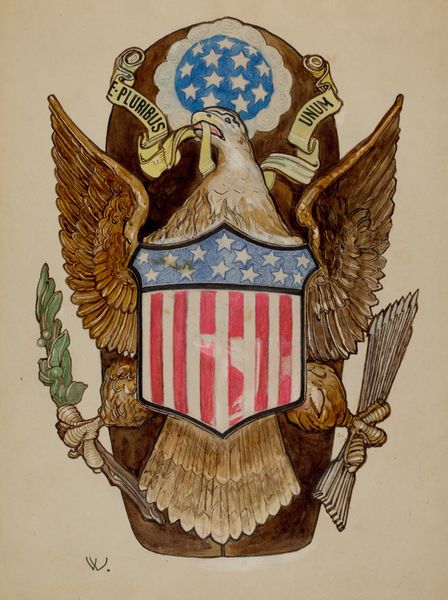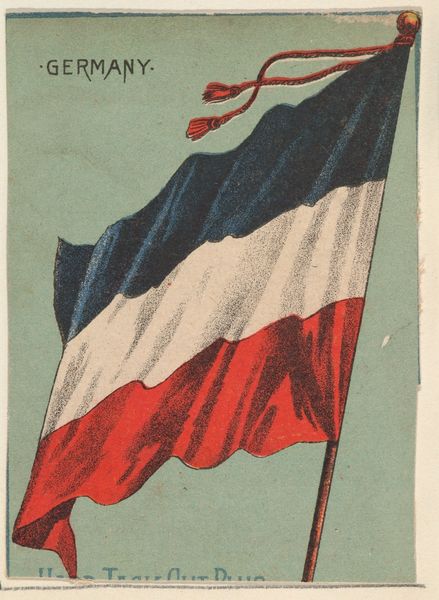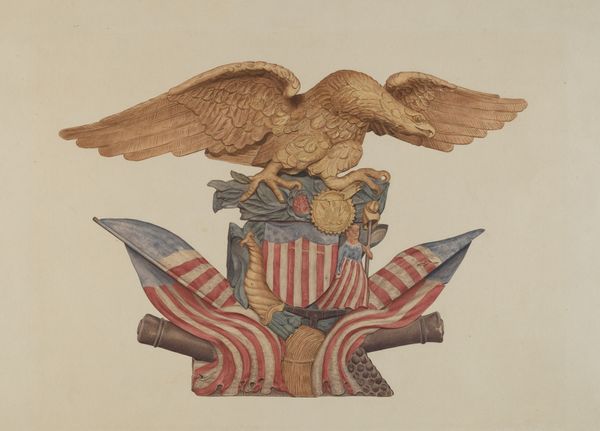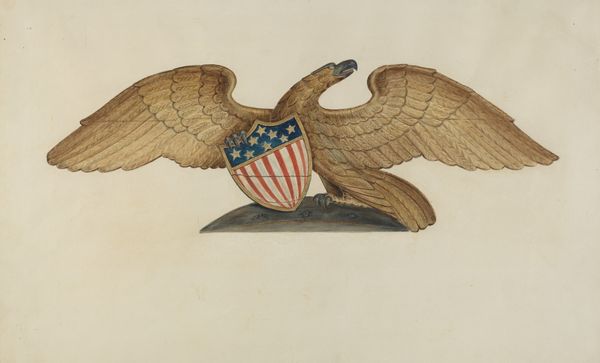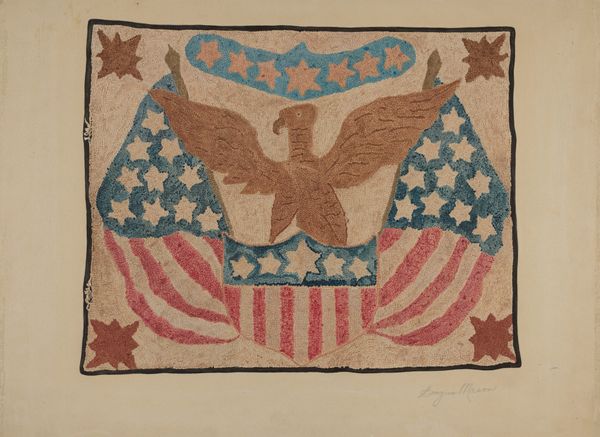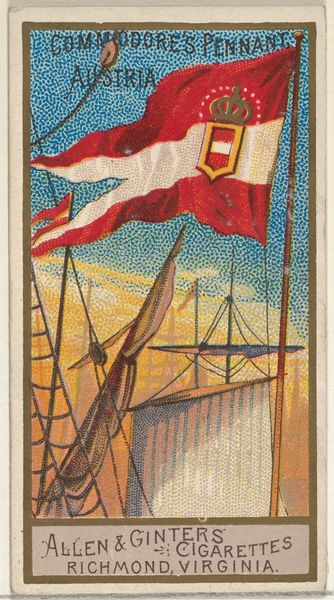
United States, from Flags of All Nations, Series 1 (N9) for Allen & Ginter Cigarettes Brands 1887
0:00
0:00
drawing, print, paper
#
drawing
# print
#
paper
Dimensions: Sheet: 2 3/4 x 1 1/2 in. (7 x 3.8 cm)
Copyright: Public Domain
Curator: Looking at this, I'm immediately struck by how visually compact and concentrated it is. The muted colors and tight composition create this feeling of…contained power, I suppose. Editor: This print, dating from 1887, comes from a series called "Flags of All Nations" produced by Allen & Ginter, a cigarette brand. It's one of a set of collectible cards included in their cigarette packs. Curator: Ah, that explains the size. A small token meant to be collected and traded, carrying a powerful message. The eagle looks almost medieval with that fierce beak, and that rather awkward grasp of arrows along with the olive branch feels like very blunt messaging about dominance and peace. What was the appeal? Editor: Mass-produced images like these helped disseminate a specific brand of patriotism during a period of rapid industrialization and social change in the United States. Images of the flag and eagle helped naturalize what at the time, given its rapidly expanding borders and diverse population, was not a fully resolved national identity. Cigarette cards provided a tangible form of belonging, creating a sense of connection. Curator: So the image became a sort of totem then? Representing belonging and the ever present idea of the United States in one’s pocket? What I find curious is how they have chosen to represent the symbolism with simple objects – flag, stars, and bald eagle. It seems this makes the image approachable and easy to relate to as there is not much to decode. It invites contemplation rather than reflection. Editor: Absolutely, it provided a pocket-sized reassurance. In our contemporary moment inundated with imagery, it is hard to imagine its original context and influence. The image’s circulation and meaning were inherently social, connecting the smoker to an imagined community through material culture. The advertisement then in turn plays on both one’s personal identity and collective memory. Curator: This really puts our ideas of art and its public role in a different light. It illustrates a simple but elegant strategy used in a modern capitalist system. Editor: Indeed, a commercial object speaking volumes about identity.
Comments
No comments
Be the first to comment and join the conversation on the ultimate creative platform.
